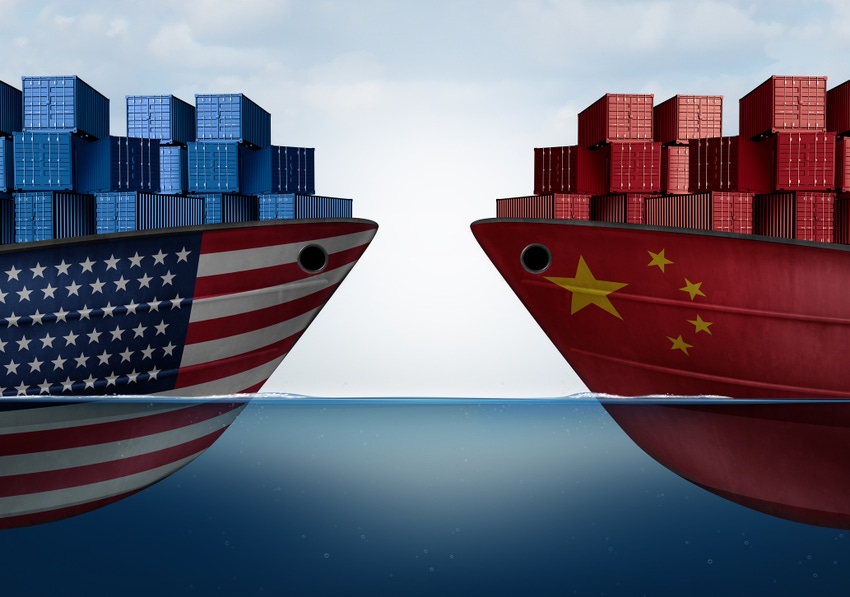
COVID-19 relief legislation took top priority for the Biden Administration’s first two months, but as stimulus programs begin to take effect President Biden and Congress will turn to other issues.
Trade could be a key topic for U.S. agriculture. How will the new administration and a power change in Congress affect trade deals?
Farm Press asked Extension economists Aaron Smith, University of Tennessee Institute of Agriculture, and John Robinson, Texas A&M AgriLife, to weigh in on the challenges and opportunities facing the Biden Administration and Congress.
With a new administration and new trade negotiators, how will the trade dispute with China change, if at all?
AS -- There is a great deal of uncertainty, but in the short term it seems unlikely that the U.S. will want to do major renegotiations or revisions to the existing trade deal. The current administration is focusing on COVID-19. Once the U.S. is beyond COVID, the administration will likely turn to domestic issues for the next two years. These are likely to include: negotiating a new farm bill and environmental/climate change policies.
China has been buying large amounts of agricultural products and commodities from the U.S., but also from other countries (Canada, Brazil, the EU). There’s a real strong demand pull from China right now.
Information out of China always should be interpreted cautiously; however, the large ag purchases likely result from a combination of factors: African Swine Fever (ASF) related hog herd rebuild, decreased domestic production/over estimation of stocks, consumer demand from the large and expanding middle class, stockpiling key commodities, and China food security policies.
What comes after the Phase One trade agreement is a huge unknown?
Ext ension economist John Robinson, Texas A&M AgriLife. (Photo courtesy of Texas A&M AgriLife)
ension economist John Robinson, Texas A&M AgriLife. (Photo courtesy of Texas A&M AgriLife)
JR --The best answer is, I don't know. With nothing to back me up, I am inclined to think that the Chinese were going to do what they thought was in their best interest (buying cotton at low prices) regardless of their Phase One obligations. They happen to coincide, but that's just a coincidence. With nothing to back me up, I expect the Biden Administration will be less stringent/tough on China, which only reinforces my first statement.
The issue seems likely to change from the Phase One issue to the Xinjiang human rights issue. The U.S. currently has a ban on cotton and cotton products from Xinjiang, where 85% of Chinese cotton is harvested. Assuming the ban in enforced and comprehensive, China may have to import even more foreign cotton to run their textile/apparel export industry.
Is the Biden Administration likely to push for new negotiations with China, turn back to a pre-Trump posture of maintaining a harder line with China?
AS -- There will need to be new negotiations. How these occur and how they are initiated will be critical to agriculture moving forward. Unfortunately, there is not much being said now.
JR -- I am not at all sure, but I don't expect them to be as hard/tough as Trump. I think they will be more nuanced, but whether that is effective or not remains to be seen.
How about the U.S. – Mexico - Canada Trade Agreement? Will that change at all?
AS -- There are some issues right now with Canada’s poultry and dairy Tariff Rate Quotas (TRQ) compliance that will likely be pushed by the USDA. Secretary Vilsack is well versed on issues with U.S. dairy access to Canadian markets through his former position at the U.S. Dairy Export Council. Also issues with Mexico banning GMOs will need to be addressed.
Some compliance disputes and access discussions will occur, but with other more pressing trade negotiations, it seems unlikely a USMCA overhaul will be a priority in the next few years.
JR-- I would expect USMCA to be as beneficial to U.S cotton as NAFTA was ... most immediately in supporting Mexican demand for imports of U.S. cotton.
Turkey and cotton, where are we with that?
Extension Econom ist Aaron Smith, University of Tennessee Institute of Agriculture. (Photo courtesy University of Tennessee)
ist Aaron Smith, University of Tennessee Institute of Agriculture. (Photo courtesy University of Tennessee)
AS -- Nothing new that I have heard. The U.S. has almost a half-million million bales exported to Turkey for the current marketing year. Past dumping accusations remain in the background.
JR -- Last I heard, Turkey still has a punitive duty on imported U.S cotton. But that's not stopping Turkish mills from importing lots of U.S. cotton because Turkey has gotten some of China's former European market share, I think.
Any chance of improving trade with other Asian Nations?
AS -- There is a likelihood that multilateral trade agreements will be pursued rather than bilateral. It may be revisiting the Trans-Pacific Partnership (TPP)/Comprehensive and Progressive Agreement for Trans-Pacific Partnership (CPTPP) agreements or a new trade agreement in the region. Tremendous opportunities exist for U.S. agricultural products in Southeast Asia. Hopefully, this will be a priority for the Biden administration. This could also be used in a broader policy initiative to address issues with China.
JR -- I suppose, but I don't have a real feel for it.
Any long-term effects from the trade disputes?
AS -- For agricultural exports right now, no, but circumstances are always changing. COVID-19/trade disruption relief payments for U.S. agricultural producers could become an issue for trade negotiations/World Trade Organization (WTO) compliance down the road, but I have not heard of issues moving to the forefront at this time.
JR -- I think trade disputes prior to COVID have been supplanted by the pandemic disruption and then the unfolding recovery.
Anything I haven’t thought of?
AS -- Opportunities/challenges with Britain and the EU will gain traction once officials are in place.
Strong export sales of agricultural commodities were the biggest contributor to the substantial increase in corn, soybean, wheat, and cotton prices from August 2020 to present and will continue to play a vital role, but market focus will now shift to weather and plantings in the U.S., which adds another level of unpredictability.
About the Author(s)
You May Also Like






